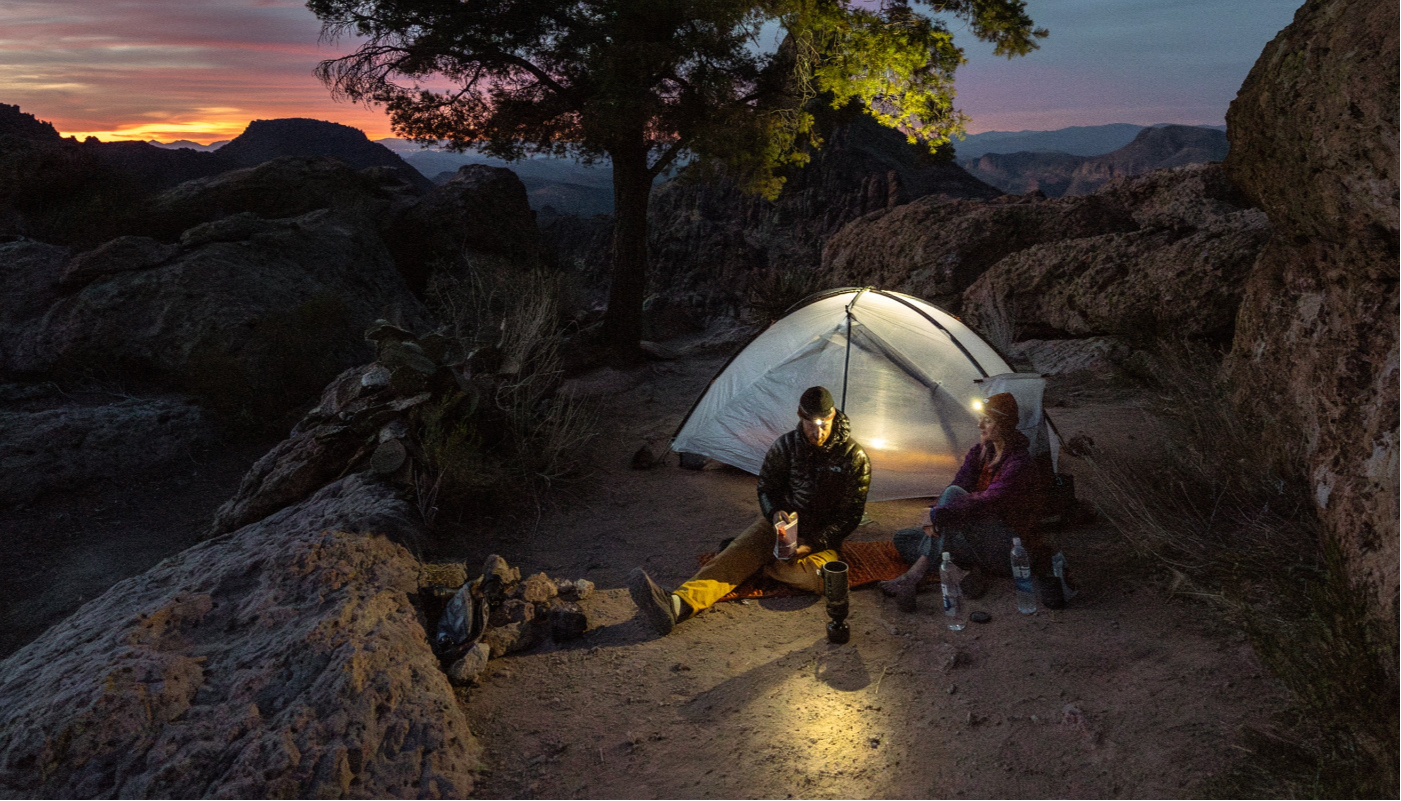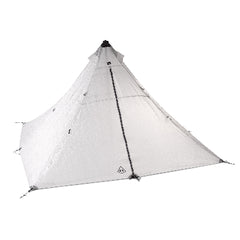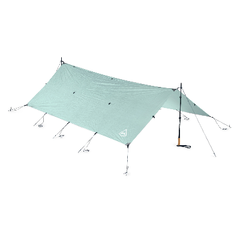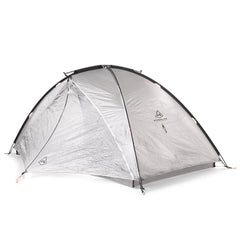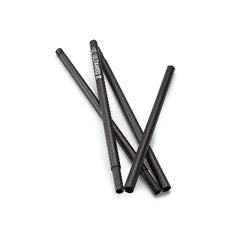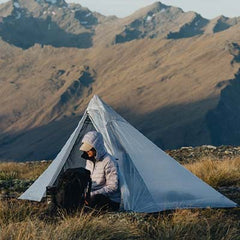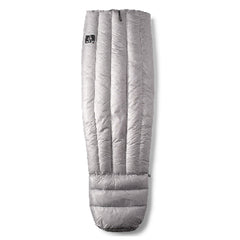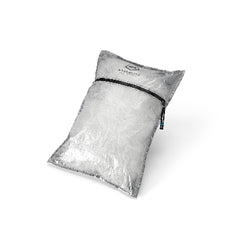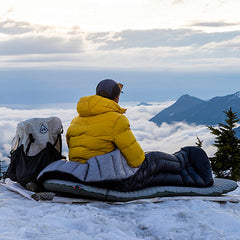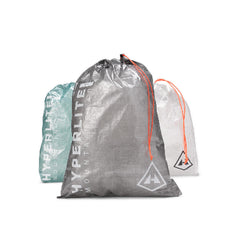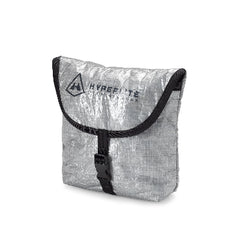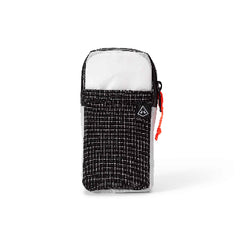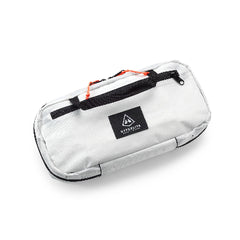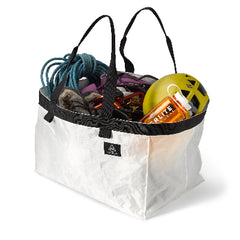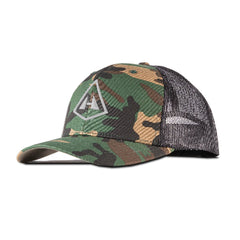Words and Photos by Huw Oliver @topofests
Our famed series about potentially disastrous adventures with glorious saves is back with a new tale from Abby Evans! Based on a quote from The GRATEFUL DEAD documentary "Long Strange Trip" and perhaps their most infamous roadie, Steve Parish, it refers to one of his sayings during the "Wall of Sound" era that featured a PA and speaker system that was the size of a small town. He reflected on the chaotic and unhinged ordeal of transporting the equipment from place to place and getting it set up by showtime, and how when the police, venue managers, etc. asked the inevitable question, "Who's in charge around here?" the response was always, "THE SITUATION IS THE BOSS, MAN." We couldn't help but wonder how many times the friends in our orbit have felt the same way in the situations they've found themselves in.
The day had started so well. Waking up at the Lossistua hut, it had dawned crisp, clear, and bright after a week of wind, rain, and high freezing levels. The forecast contained wall-to-wall sunshine symbols and comfortably cold temperatures as normal service resumed in Norway's arctic north. We ate, tidied, and packed with an air of anticipation for what promised to be a magical day in the mountains—a just reward for enduring the complex conditions and draining days that had preceded this one.

Norwegian huts are unfeasibly nice places to stay, at least for someone used to the Scottish bothy network. Not that I mean to grumble: bothies are dry, characterful, and free at the point of use, an indelible part of Scottish mountain culture. But the huts in Norway! Birch logs are pre-cut and stacked by the cast-iron stove, a gas hob to cook on, and cozy bunk beds with pillows and duvet. Not to mention the long-drop toilet with views to die for. All that we needed to bring was our extra food and a sleeping bag liner, and I had to continuously pinch myself while packing. This was all that was needed to go and explore a two-day route. It fit comfortably in my Crux pack, even with my usual safety blanket of lots of extra food. "You pack your fears," as they say, and mine is peckishness.

Like I said, the day started so smoothly. A brisk katabatic wind whistled down from the glaciated high ground above us, yet to be warmed by the morning sun, so our faces were hidden behind neck warmers and hoods, our hands swaddled in warm mitts as we skinned away from the hut and toward Storsteinsfjellet, the first of the two mountains we would be traversing over the day's ski journey. A soft layer of fresh snow, just 20-30cm, blanketed the slopes and soaked up sound, gifting us fresh tracks and a growing sense of wonder.

It was all still fine as we stood before the 10m rock wall that hadn't been mentioned in the guidebook but blocked our exit from the first glacier. We skied around it, enjoying fast turns on low-angled, bouncy powder. It was still fine as our thighs burned from the 800m descent from the second glacier down to Sealggajávri, and as the burn continued on the steep skintrack onto the shoulder of Ristačohkka. Bad jokes and gummy sweets are an amazing boost to morale as fatigue sets in.

Even the best day has its imperfections, though, as we found in the shark-infested slopes that we would descend to Hunddalen, another feature that the guidebook had glossed over, but c'est la vie. We emerged into the valley, our ski bases having been nibbled here and there by the rocks, feeling the satisfying tiredness of an adventurous day that was nearing its conclusion. The rocky descent had taken some time, and we had a date with the day's only train from nearby Katterat station. Katterat is a mountain station on the railway line between Narvik and Sweden. It has no nearby road access, making it a real treat for skiers who want convenient access to the mountains of Hunddalen. It also meant that if we missed it, we would be stuck without much food and would have no train for the next 24 hours.

Time is a tricky thing, like rice. You start out with plenty, start pouring niiice and gently from the bag, but before you know it, the bag splits, and your feet are surrounded by spilled grains and shattered hopes. I think our bag split sometime around Hunddalen. We all began to surreptitiously check our watches, and ski-skin transitions were slick and quiet. No worries, though; it's around 10km and 300m vertical to the station. The guidebook mentions being able to glide almost all the way. An hour or two.

A couple of transitions and some frustrated skating later, we're looking at our watches more often. The conversation has dried up. We have entered the "Type 2 Fun Zone." Despite cartographic evidence to the contrary, the terrain is not a gentle descent but an undulating, maddening tease that is taking a lot longer than we blissfully assumed. Making the train had been at the back of our minds all day, but the lights had remained green, and the timings were fine. Now, it was looking tight. We passed a group heading into Hunddalen, and when asked, we told them we were heading for the train. "Oh, that train doesn't take passengers, I think." "Well, there is a train arriving in… (oh shit!) thirty minutes, and we plan to be on it!"

From then on, things looked a little desperate as we opened the taps on spent legs and attempted to make qualifying pace for the skate skiing at the next winter Olympics. There was enough time for me to think vaguely about a backup plan to ski out to the road but not enough to take out a map and realize that this was not as simple as I thought. Regardless, missing this train, while not dangerous, was going to suck, and as the track remained stubbornly horizontal, we watched the train – our train – round the bend 100m below us and slow as it approached the station.


My mind told me to accept defeat, but behind me, Beckie was made of sterner stuff, and we began the final, chaotic sprint over a rise, ripping off skins and shoving them haphazardly down our clothes. A twisting, tree-lined descent down the final meters flashed by quicker than you would think, and that was how three bedraggled skiers, still in harnesses and dangling gear, shot yelling out of the forest at Katterat station and slid along the snow-covered platform, stopping in front of the conductor as she scanned the length of the platform for stragglers. She picked up as much from our relieved faces as from our words of thanks and ushered us on to the train.


